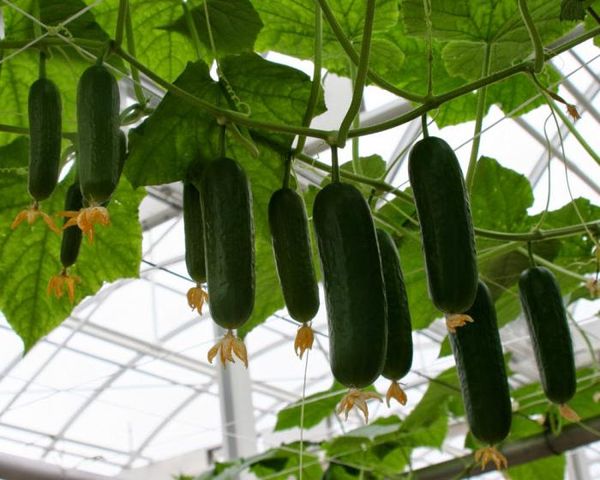Cucumber Murashka refers to the first generation hybrids. This is a versatile variety that can be grown both in open ground and in greenhouse conditions.
Table of contents
Description and characteristics of the variety Cucumber Murashka
In Russia, cucumber seeds of the Murashka variety began to be sold in 2003. Hybrid on the characteristics refers to early maturing, 35-40 days after sowing the seeds, the first cucumbers will begin to appear.
Hybrid with parthenocarpic type of pollination of ovaries.This means that cross-pollination is not required for the plant, and the seeds inside the fruit are not fully developed.
Indeterminate shrubs (not limited in growth), branching stems average. The distance between the nodes is small. In a node 3-6 bundles of ovaries can be formed. From each ovary grow fruits weighing 85 - 100 g and length up to 17 cm. Fruiting plant throughout the season.
The fruits of the description are lumpy, with small pimples, on which there are small spikes. Bottom fruits are light green in color, closer to the base is rich green.
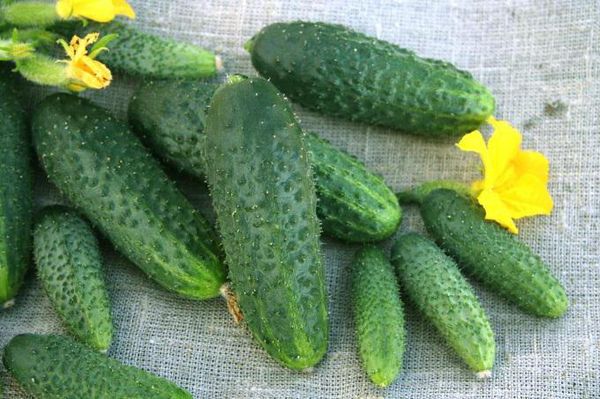
The advantages and disadvantages of the variety
Before planting a plant on your site, you need to explore all its advantages and disadvantages.
Advantages:
- Fruits throughout the season;
- Gives a rich harvest, for the summer you can collect up to 13 kg of fruit;
- Cucumbers are pleasant to the taste, without bitter taste;
- Immunity to powdery mildew and cladosporia;
- Can be grown indoors and outdoors;
- Female type of flowering, hollow flowers are rarely found.
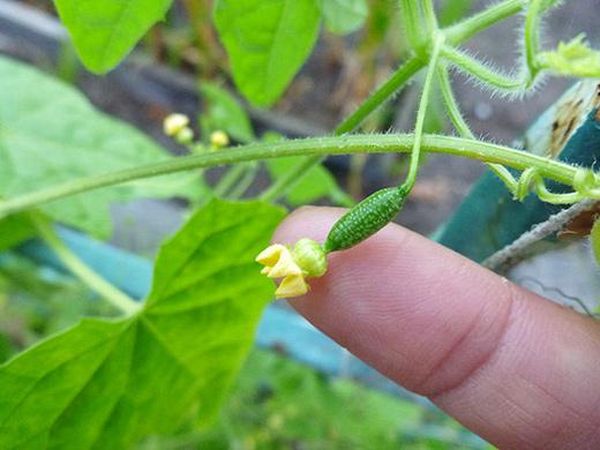
Disadvantages:
- Bushes differ unlimited growth;
- Does not reach for the collection of seeds.
Requirements for soil for planting
Soil preparation is one of the most important stages of planting cucumbers in open ground. If the soil is not fertile enough, then the harvest will be bad.
Soil should be fertile and fertilized. Choose better places in open areas where there will be a lot of sunlight.
It is desirable to grow saplings on those places where onions, tomatoes, potatoes or cabbage used to grow. After watermelons, pumpkins, melons or squash, it is not recommended to plant cucumbers, as these crops feed on the same substances, which means that after them the soil for the seedlings will be too poor.
Before planting seedlings in open ground, the soil needs dig and remove all weeds. Then make mineral and organic fertilizers.
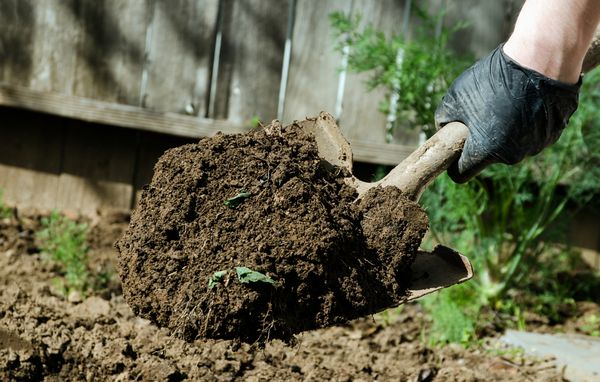
On 1 square. m. need to take:
- 10 - 14 kg of manure (can be replaced with compost);
- 25 g of urea;
- 25 g of superphosphate;
- 25 grams of potassium sulfate (15 grams of potassium chloride can be replaced).
Prepare the mixture and mix with the ground in the beds. After that, you can start planting seedlings.
Sowing rules
The second important stage of planting varieties Murashka - sowing seedlings. Crop seedlings are planted in open ground or greenhouses at the end of May. It is very important to make sure that at night no hard frosts. Since the young seedlings are very weak and even with a slight decrease in temperature may die.
If spring has stood out cold, then planting saplings is better to postpone for June. In this case, the harvest will be late.
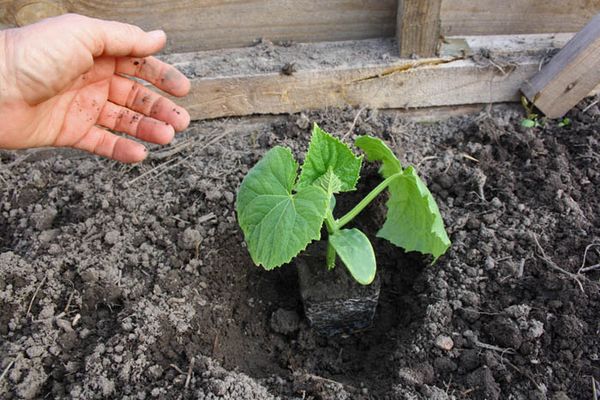
Stages of planting seedlings:
- It is necessary to prepare the soil in advance;
- Make the beds and water abundantly;
- To plant the seedlings at a distance of 5-7 cm from each other;
- Then pour a watering can.
Even if the night frosts are long gone, the seedlings still preferably covered with warm cloth.
Grade care after planting
Hybrid does not require special care, but in order to have higher yields, simple rules of agrotechnology should be observed.
In the care of cucumbers includes:
- Loosening the soil and removing weeds;
- Watering;
- Application of mineral and organic fertilizers.
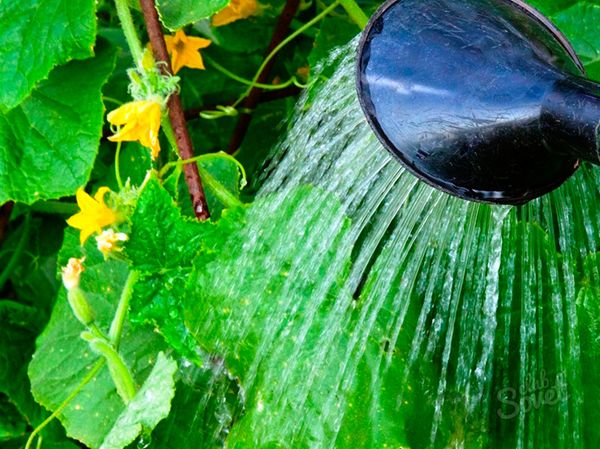
Poured cucumbers Murashka possible everyday. The more often watering the plants, the more abundant the crop will be.
Cucumbers can be fed in two ways:
- Foliar;
- Root.
Foliar top dressing is carried out in those cases, if it rained summer, at night there are frosts or the bushes have a damaged root system.
Feeding the root should be made in the evenings when the heat subsides. It is advisable for this procedure to choose a cloudy and cool day. Before you feed the plants the soil should be watered abundantly.
Over the summer you need to make at least 4 top dressings. But, if the plants are healthy and feel good, the number of dressings can be reduced.
As the first feedings you can use:
- 1 tbsp. l urea and superphosphate 10 l;
- Chicken dung (1 kg of litter per 15 liters of water);
- Cow or horse manure (1 kg per 6 liters of water).
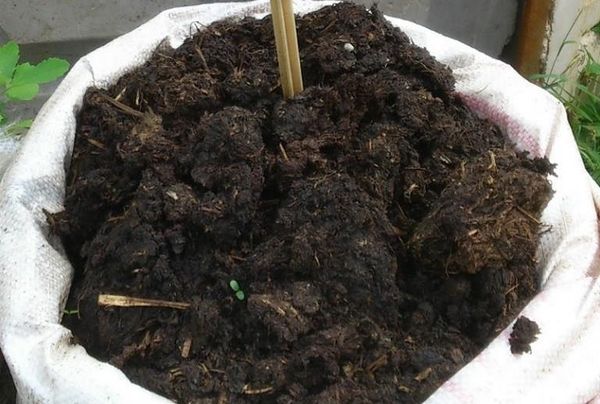
When the bushes begin to bloom, they are watered with a solution of wood ash (1 cup per 10 liters). In the period of fruiting, you can use a solution of nitrophoska (1 tablespoon. Per 10 liters.). You can also use manure or chicken manure as in the first dressing.
Care errors
- Abundant watering bushes;
- To plant seedlings every year. in the same place;
- Plant seedlings on poor soils;
- Ignoring the procedures for the application of mineral and organic fertilizers.
Diseases and their prevention
Most often, the Murashka variety is affected by diseases such as perinospora (downy mildew) and root rot.
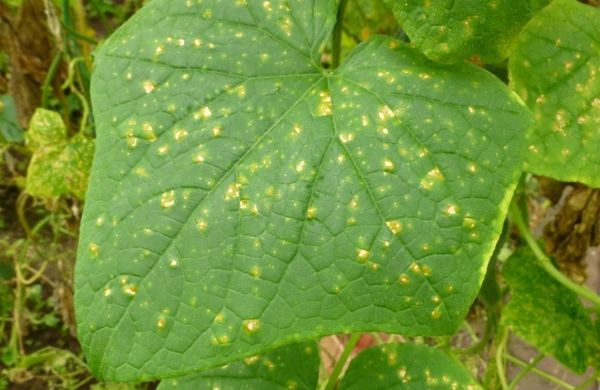
Gradually, the bushes become brown and dry. Cause downy mildew fungi. The reason for their appearance can be abundant watering with cold water.
To get rid of peronosporoza bushes need to be watered with a solution of whey or spray them with kefir mixed with iodine.
The second common disease is root rot. The cause of development can be watering with cold water, too close to the bushes to each other and sudden temperature changes during the day. The danger of root rot is that the disease can persist in the soil where the affected plants were growing.
To get rid of the root rot should remove the soil from the stems. Then treat the root system with a solution of copper sulfate and wood ash (in 1 liter of water, 2 tsp. Of vitriol and 6 tbsp. Of ash should be diluted).
When the roots dry up they need to bury the ground. Those bushes that died, you need to dig and burn away from the dacha.
Harvesting and storage rules
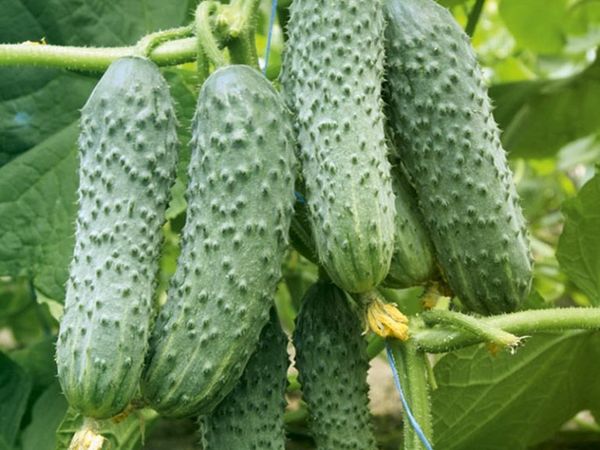
Harvesting is possible during the entire fruiting season.
To keep the fruit fresh, their can be dipped in a container with water. Fruits should be covered 1-2 cm. The water should be changed once a day. With this method, cucumbers can be kept fresh for up to 3 weeks.
Another way is to place the vegetables in a plastic bag, after wrapping them with wet gauze. Keep vegetables fresh up to 10 days.
Cucumbers varieties Murashka loved gardeners for simplicity and yield.The only disadvantage of this hybrid - with the wrong care on the bushes can appear downy mildew and root rot.
